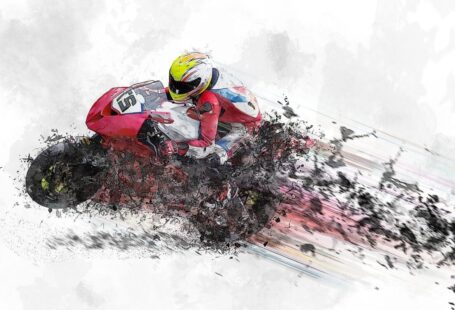The dirt bike suspension calculator is a great tool to help you find the perfect balance between comfort and performance. It gives you a lot of information about your bike, including the spring rate, rebound damping, static sag, and extended sag.
Sag measurement on a dirt bike
Setting sag on a dirt bike is important. It helps balance the bike and prevents it from diving. You can also use it as a reference point while riding. Besides improving handling, it can also increase the longevity of the suspension.
When you are measuring sag, you want to measure the distance from the rear fender to the swing arm. There are two types of sag measurement: static and free.
Static sag is measured without any rider on the bike. To do this, you will need a sag scale or a metric tape measurer. This will make it easier to determine what sag you’re getting.
Free sag is measured from the same two points as static sag. To calculate this, you will need to push down on the rear end of the bike. Once you have that number, you can adjust the preload collar to increase or decrease your sag.
Static sag vs extended sag
When you are setting up your dirt bike suspension, the first thing to consider is sag. Sag is the amount the shocks compress in regular riding positions. This can help you determine the appropriate spring rate.
There are two different types of sag. The race sag and the static sag. Using the correct type of sag is vital to achieving optimum rider performance.
The race sag is the best measure of the actual amount of suspension compression that occurs during the racing process. It is calculated by subtracting the riders height from the bike’s stand. However, this measurement is not as accurate as the static sag.
To get a better estimate, use a Motool Slacker. This digital scale measures your sag. You can also use a standard tape measure. Just be sure to measure your sag while you are sitting and standing.
Compression damping
Compression damping is an important part of your dirt bike suspension. It helps you control how your bike rides. The right settings can make your ride more comfortable and keep you from bottoming out. You should know how to adjust your forks and shocks so you can get the most out of your suspension.
When you’re riding, your forks and shocks are going to be compressing the tires, absorbing any energy that’s coming from the wheels. However, if the compression is too stiff, you’ll feel a sharp and pronounced bounce. This feeling can be a nuisance, especially if you’re in fast-paced MX track conditions.
If you’re getting a lot of spongy or wobbly feelings, you may need to increase your rebound damping. To do this, you’ll want to change the amount of preload in your suspension. Increasing preload forces your bike to sit higher in stroke, which helps keep the wheels from getting sucked out of the frame.
Rebound damping
There are many ways to adjust the damping on your dirt bike suspension. You should be able to find one that works for you. However, it may be difficult to know which settings are ideal.
In general, rebound and compression damping should be used in combination. A softer shock setting will allow you to get more traction and a better grip on the dirt. It also makes the front shock softer and less likely to kick. The opposite is true for the rear shock.
The rebound adjuster should be set to the owners manual setting. This will ensure that your chassis does not bounce and that it settles quickly after a bump. Also, it should improve control and confidence.
Compression damping is another important aspect of your dirt bike suspension. Too little can cause your bike to bottom out while riding. It can cause your fork to slide up when braking, or it can cause the wheel to move too quickly.
Setting the right spring rate
Setting the right spring rate for your dirt bike suspension can make a big difference in your riding experience. A poorly adjusted setup can leave you feeling sluggish, sloppy and even unsafe. To make the best adjustments, you’ll want to start by measuring sag.
Sag is a measure of how much a bike’s weight sags over the top of the fork or shock. If you’ve been running a stiffer set up, you can lower the amount of sag to get a softer, smoother ride. The ideal setting is a balance between the size of a bump sensitivity and the support of a big hit.
If you’re using a fork with an air spring, you can change the pressure by manipulating the valve stack. Some manufacturers, like Ohlins, have made the adjustment points easy to find. Other brands may not have this, but you can usually find a web site that can give you the appropriate settings.



